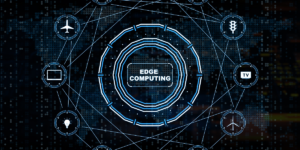
Alice Parker, USC Viterbi professor of electrical and computer engineering. (PHOTO CREDIT: HUGH KRETSCHMER)
Alice Parker, USC Viterbi professor of electrical and computer engineering, is a leader in the field of biomimetic neuromorphic circuits and is the founder of USC Viterbi’s BioRC Program. Parker followed a very traditional path of Electrical Engineering until she began exploring how the neuroscience-inspired engineering of neuromorphic circuits could mimic neurons and, ultimately, lead to the building of AI that could adapt and learn.
Recently, Parker co-authored the book Women in Microelectronics (2020) and wrote the chapter From Silicon to the Brain Using Microelectronics as a Bridge. Below, she answers some questions about her experience writing the book, her work at the intersection of biology and engineering, and future research she intends to explore.
What was it like writing “Women in Microelectronics” and being able to talk about your contributions with other women in STEM?
It was cathartic writing the chapter because it forced me to revisit the past and to contemplate how I had arrived at my current position and state in the academic community. When I started writing my chapter, I thought that my experience was unique. However, it turned out that there were echoes of my story in the other chapters written by the women who were invited to participate in the book. The act of writing allowed me to re-examine my progress and to understand, somehow for the first time, how difficult the path I had taken was. It was great to suddenly have a community of women, rather than being isolated as I was for most of my career.
You began as a “conventional” electrical engineer but shifted to focus on the biological side of engineering when you founded the BioRC program. What inspired this change and what was it like to learn a new field later in your career?
The chapter talks a bit about how I was interested in biological and chemical science from the beginning; from my father’s influence to my own interest in the brain and psychology. I had been doing enough reading early on to begin this new field, but I dove in even more with textbooks and a graduate course on neuroscience. This helped me understand a little more of this vast field.
I do read neuroscience literature on my own and it inspired a lot of my investigations and work. So much so that I am now considered to be at the forefront of what is called the neuromorphic circuits field, along with about half a dozen researchers across the globe. I investigate topics like how to use electronics to model astrocytes, cells that were not historically considered to contribute to reasoning and memory.
In your chapter, “From Silicon to the Brain Using Microelectronics as a Bridge” you mention a number of instances where you faced challenges as a woman in STEM. How did you overcome feelings of imposter syndrome?
There were many challenges to my career path, including the scholarship committee that was concerned I was a woman who wanted to study engineering. It was a particularly lonely and isolating journey. That said, I learned to function independently and to blaze trails without a mentor beside me. Having strong parental support from my father helped during my formative years. As my accomplishments accumulated, I looked back and saw what I had been able to do on my own; not due to luck or someone’s good graces, but due to my own hard work. I would not be where I am today if I had not been thrown in the water without knowing how to swim.
How has the BioRC Program and your work in neuromorphic computing impacted the world today?
That is a really tough question to answer because my work typically looks decades into the future, so the impact is not yet being felt. Today, someone referenced a paper I wrote in the early 80’s on a different topic, so I was ahead at that point. However, I have broken ground by our attempts to mimic biology more precisely, and to demonstrate systems working and operating in a sophisticated manner. Others have followed and so I believe the impact is being felt. Time will tell.
In your opinion, what makes electrical engineers uniquely suited to work with technologies that can have such big impacts on society?
Societal problems require interdisciplinary solutions. Even within electrical engineering, multiple disciplines are involved in solving societal problems. Many electrical engineers have an educational background that is diverse enough to have a major impact on society, with understanding spanning systems, signals, controls and mathematics.
Electrical engineers, like other engineers, learn to build systems. Building any sort of engineering system can impact society, as we all have experienced with the use of microelectronics and the Internet. The rigorous electrical engineering training also helps prepare us. System building requires integration of knowledge from diverse subfields and electrical engineers excel at that.
What are the next steps in your research?
I am interested in consciousness — what is often called the “hard problem” — and hope to do some writing about it. To quote from Wikipedia “The hard problem of consciousness is the problem of explaining why and how we have qualia or phenomenal experiences.” That is to say, why do we have personal, first-person experiences, often described as experiences that feel “like something.”
I am also involved with researching what is called the “neural code” that contains information spiking neurons send about the meanings and origins of their signals. And, I am also beginning to construct a model that simulates DNA expression in neurons to better understand how their circumstances force change and growth. DNA expression is a mechanism that changes the neural networks in the brain to support learning and memory. A truly intelligent machine would have this capability to mimic biology more precisely.
Published on October 2nd, 2020
Last updated on October 2nd, 2020









